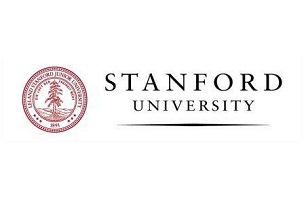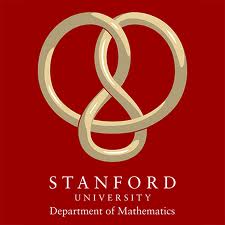


|

|
| Saturday, Feb 4 | Sunday, Feb 5 | ||
| 9:45-10:15 | Breakfast | 9:45-10:15 | Breakfast |
| 10:15-11:05 | A. Kleshchev | 10:15-11:05 | J. Greenstein |
| 11:15-12:05 | G. Kuperberg | 11:15-12:05 | A. Berenstein |
| 11:15-12:05 | Lunch | 12:15-1:05 | M. Vazirani |
| 1:30-2:20 | K. Goodearl | ||
| 2:20-2:50 | Coffee | ||
| 2:50-3:40 | B. Brubaker | ||
| 4:00-4:50 | P. McNamara | ||
| Arkady Berenstein (University of Oregon) |
| Quantum Hankel algebras |
|
Abstract. |
| Ben Brubaker (MIT) |
| Exactly solvable lattice models |
|
Abstract. |
| Kenneth Goodearl (UC Santa Barbara) |
| Quantized Coordinate Rings, Poisson Structures, and the Orbit Method |
|
Abstract.
The talk will focus on connections between quantized coordinate rings of
algebraic groups and varieties and their corresponding classical
coordinate rings, in particular, the connection via the Poisson
structure on the classical coordinate rings arising from the
construction of the quantized coordinate rings. The Orbit Method in Lie
theory, which was first developed to parametrize irreducible unitary
representations of a nilpotent Lie group $G$ by the coadjoint orbits in
the dual of the Lie algebra $\mathfrak{g}$ of $G$, evolved away from
actual orbits via the theorem of Kirillov, Kostant, and Souriau, which
established that the coadjoint orbits in $\mathfrak{g}^*$ coincide with
the symplectic leaves for a standard Poisson structure. |
| Jacob Greenstein (UC Riverside) |
| Topological Hall algebras and categorical exponentials |
|
Abstract. In this talk, based on a joint work with A. Berenstein, we define a topological Hall algebra by dropping the exactness. The resulting algebra is a deformation of the completion of the usual Hall algebra with respect to the grading by the Grothendieck group, and its associativity leads to rather non-trivial $q$-binomial identities. To establish the existence of an integral isomorphism of the topological Hall algebra onto the completion of the Hall algebra, one needs to introduce exponentials of categories and study their factorizations. This leads to an analogue of triangular decompositions for categories and multiplicative identities for the exponentials. |
| Alexander Kleshchev (University of Oregon, Eugene) |
| Modular branching rules for projective representations of symmetric groups and lowering operators for the supergroup $Q(n)$ |
|
Abstract.
There are two approaches to projective representation theory of
symmetric and alternating groups, which are powerful enough to work for
modular representations. One is based on Sergeev duality, which connects
representation theory of the supergroup $Q(n)$ and projective
representation theory of the symmetric group via appropriate Schur
algebras and Schur functors. The second approach follows the work of
Grojnowski for classical affine and cyclotomic Hecke algebras and
connects projective representation theory of symmetric groups to the
crystal graph of the basic module of the twisted affine Kac-Moody
algebra of type $A_{p-1}^{(2)}$. We explain how to connect the two
approaches mentioned above and to obtain new branching results for
projective representations of symmetric groups. This is achieved by
developing the theory of modular lowering operators for the supergroup
$Q(n)$ which is parallel to (although much more intricate than) the
similar theory for $GL(n)$, first developed by the speaker in
mid-1990's. |
| Greg Kuperberg (UC Davis) |
| Spiders, buildings, and geometric Satake |
|
Abstract.
Louis Kauffman found a special description of the Jones polynomial and
the representation theory of $U_q(\mathfrak{sl}(2))$ in which each skein
space has a basis of planar matchings. There is a similar calculus
(discovered independently by myself and the late Francois Jaeger) for
each of the three rank 2 simple Lie algebras $A_2$, $B_2$, and $G_2$.
These skein theories, called "spiders", can also be viewed as
Gröbner-type presentations of pivotal categories. In each of the
four cases (optionally also including the semisimple case $A_1 \times
A_1$), the Gröbner basis property yields a basis of skein diagrams
called "webs". The basis webs are defined by an interesting
non-positive curvature condition. |
| Peter McNamara (Stanford) |
| Some representation theory of metaplectic groups |
|
Abstract. |
| Monica Vazirani (UC Davis) |
| Simple KLR-modules |
|
Abstract. Khovanov-Lauda-Rouquier algebras have played a fundamental role in categorifying quantum groups. I will discuss the structure of their simple modules. This is joint work with Aaron Lauda. |